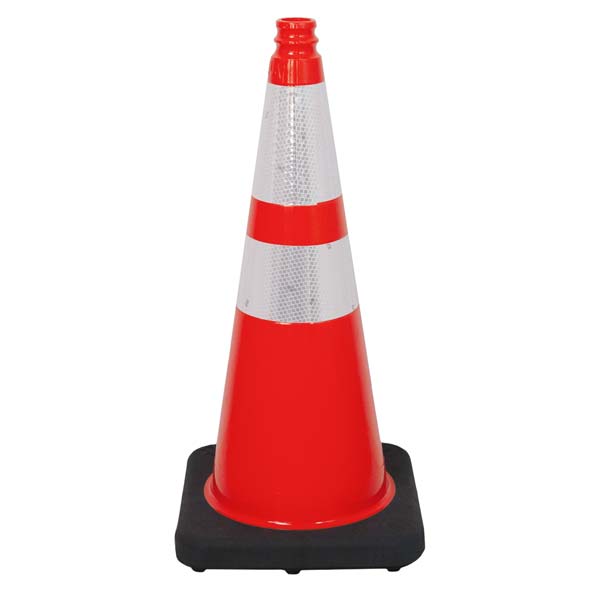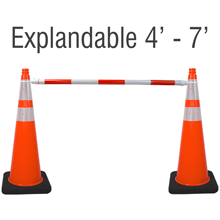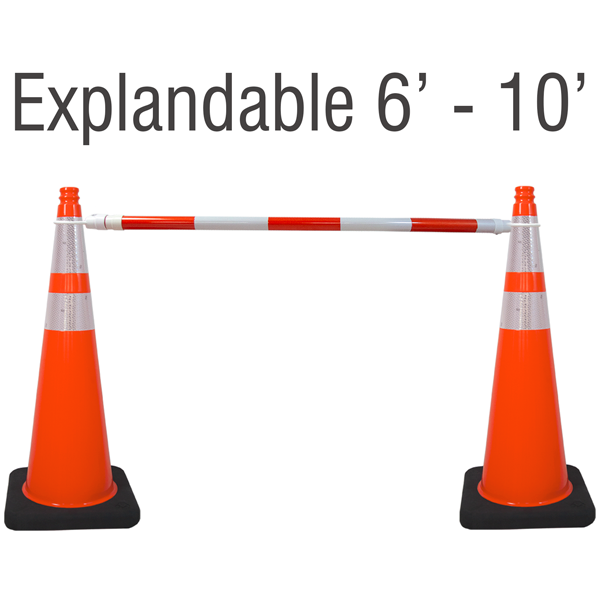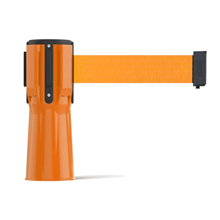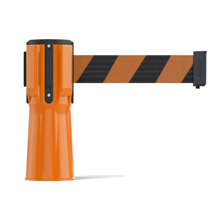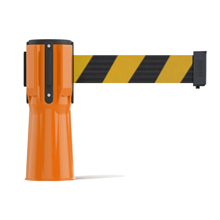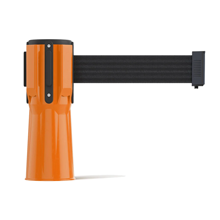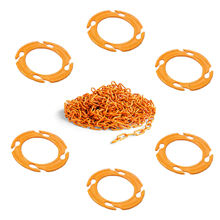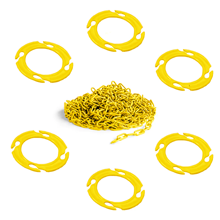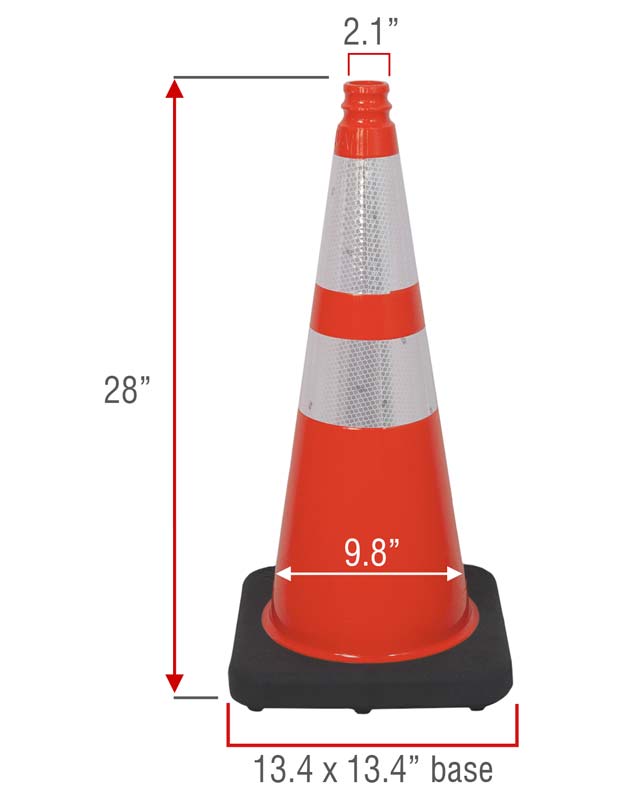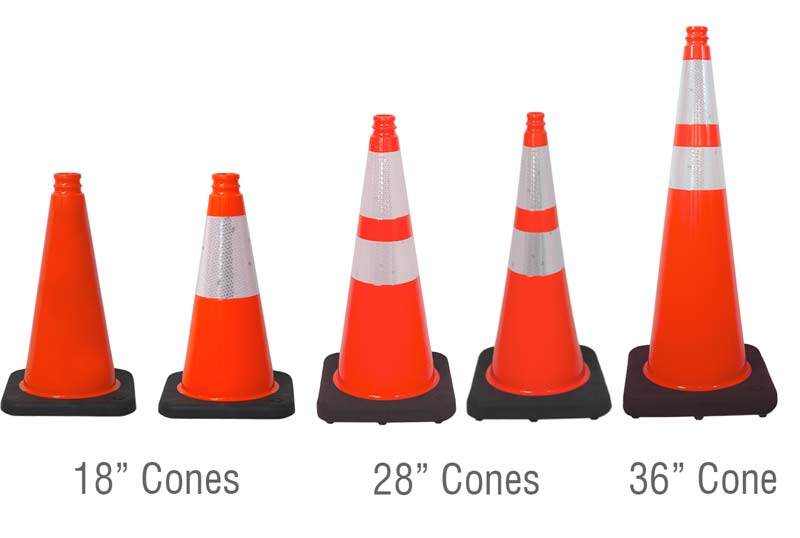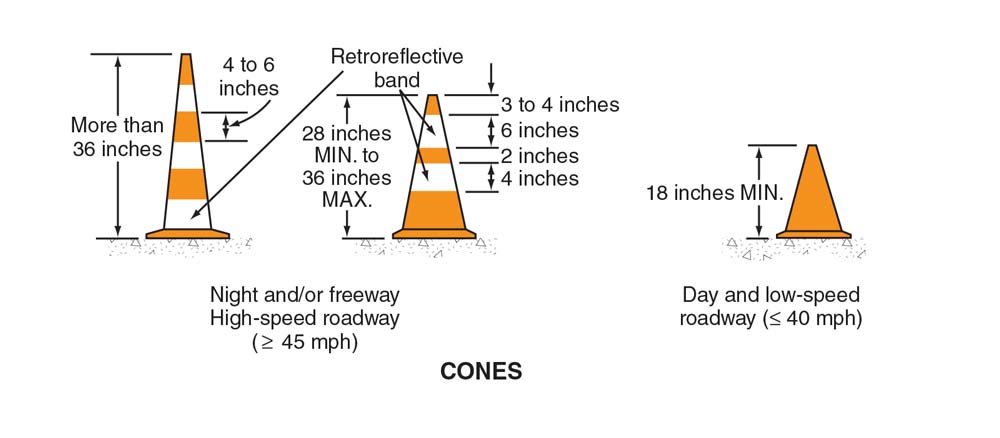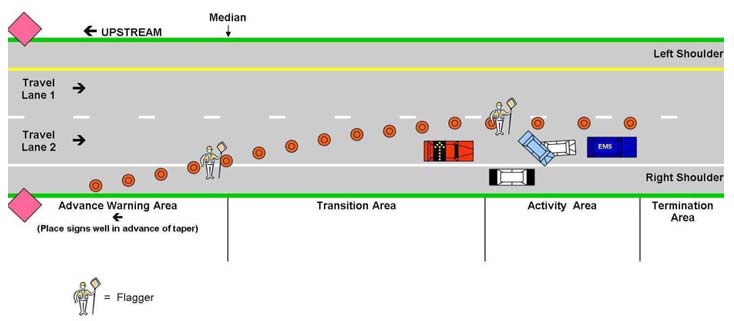- Item #
- X28ORB-7
Note:
28" Orange Traffic Cone w/ Black Base, 7lbs
Reflective Bands (6" & 4") - Weighs 7lbs
Size:
Material:
Laminate:
Mounting:
Packaging:
Recommended Accessories
Product Information
Details
28" Traffic Cone Features:
Orange Traffic cones are designed to maximize safety and efficiency in roads and workzones. This 28" Orange Traffic Cone is ideal to block off areas, organized traffic flow in parking lots, mark short duration maintenance in streets under 45mph. In addition, they help ensure the safety and well-being of workers, pedestrians and motorists.
Per MUTCD guidelines an 28" Orange Traffic Cone should be used on freeways and other high-speed highways or at night on all highways, or when more conspicuous guidance is needed (≥45 mph)(≥70 km/h). Also, cones shall be predominantly orange and shall be made of a material that can be struck without causing damage to the impacting vehicle. Our 28" Orange Traffic Cone with Black Base and reflective bands is specially formulated to meet NCHRP 350/MASH requirements, it is MASH accepted and complies with MUTCD standards.
- Gorilla Grip Top reduces slipage and hand fatigue.
- Stackable for easy transport and storage.
- Cones don't stick together when stacking reducing collar wear.
- Engineered to meet MUTCD standards.
- Meets NCHRP 350/MASH requirements.
- 100% recyclable.
- High visibility Orange.
- Cone is molded to base, so it won't separate if struck.
Specifications:
- Material: PVC Plastic with Recycled PVC and Rubber Base.
- Color: Fluorescent orange
- Reflective sheeting: High Intensity Prismatic Band - 6" high
- Weight: 7 lbs.
- Height: 28”
- Dimensions: 2.1” wide cone top and 9.8” cone base width, 13.4” x 13.4” rubber base
Traffic Cone Application
| Traffic Cone's Size | Weight | Application |
|---|---|---|
| 18" Cone | 3lbs | 18 inch cones, weighing 3lbs, are used on day and low-speed roadways (under 45mph), and is the minimum height required for street usage. These cones are typically used in sports, landscaping, parking areas, and in roadways under 45mph. |
| 28" Cone | 7lbs | 28 inch cones, weighing 7lbs, are also know as called metro cones. These cones are used in non-highway applications such as local streets construction work. For nighttime application, cones must have retroreflective bands. |
| 28" Cone | 10lbs | 28 inch cones, weighing 10lbs, is the minimum height required for high-speed roadways over 45mph per MUTCD guidelines. These cones must have retroreflective bands for better day and night visibility. Typically used as hazard markers on freeways and high-speed areas. |
| 36" Cone | 10lbs | 36 inch cones, weighing 10lbs, are typically used on high-speed roadways over 45mph per MUTCD guidelines. These cones must have retroreflective bands for better day and night visibility. Typically used as hazard markers on freeways and high-speed areas. |
MUTCD Specification:
Section 6F.59 Cones
Standard: Cones shall be predominantly orange and shall be made of a material that can be struck without causing damage to the impacting vehicle. For daytime and low-speed roadways, cones shall be not less than 450 mm (18 in) in height. When cones are used on freeways and other high-speed highways or at night on all highways, or when more conspicuous guidance is needed, cones shall be a minimum of 700 mm (28 in) in height. For nighttime use, cones shall be retroreflectorized or equipped with lighting devices for maximum visibility. Retroreflectorization of cones that are 700 to 900 mm (28 to 36 in) in height shall be provided by a 150 mm (6 in) wide white band located 75 to 100 mm (3 to 4 in) from the top of the cone and an additional 100 mm (4 in) wide white band located approximately 50 mm (2 in) below the 150 mm (6 in) band.
Retroreflectorization of cones that are more than 900 mm (36 in) in height shall be provided by horizontal, circumferential, alternating orange and white retroreflective stripes that are 100 to 150 mm (4 to 6 in) wide. Each cone shall have a minimum of two orange and two white stripes with the top stripe being orange. Any nonretroreflective spaces between the orange and white stripes shall not exceed 75 mm (3 in) in width.
- Option: Traffic cones may be used to channelize road users, divide opposing vehicular traffic lanes, divide lanes when two or more lanes are kept open in the same direction, and delineate short duration maintenance and utility work.
- Guidance: Steps should be taken to minimize the possibility of cones being blown over or displaced by wind or moving vehicular traffic. Cones should not be used for pedestrian channelization or as pedestrian barriers in TTC zones on or along sidewalks unless they are continuous between individual devices and detectable to users of long canes.
- Option: Cones may be doubled up to increase their weight.
- Support: Some cones are constructed with bases that can be filled with ballast. Others have specially weighted bases, or weight such as sandbag rings that can be dropped over the cones and onto the base to provide added stability.
- Guidance: Ballast should be kept to the minimum amount needed.
Source: 2009 MUTCD
Traffic Cone Placement
Traffic Cone Placement for Lane-Blocking Incidents
- Carry at least 16 cones on your vehicle.
- Set out traffic cones in a taper to guide approaching traffic into available lanes to safely pass the incident.
- Start deploying cones at the rear of your vehicle and work your way upstream.
- Reinforce and straighten traffic cone lines and tapers after their initial placement to increase effectiveness and maximize visibility of the cones.
- Remember to always face traffic while placing or removing cones.
- Space cones equally at least 20 feet apart.
- Use 12 cones for the lane closure taper, which should be approximately 250 feet, and four cones along the activity area to quickly make the scene safer.
- Place cones around response vehicles and place at least one cone downstream past the incident to allow a parking spot for the ambulance or EMS vehicle.
- Use striping marks as a distance reference to help with cone placement. Roadway striping on freeways typically has a 10 foot painted stripe and a 30 foot gap.
- Increase the number of cones and the distance between cones as the speed of approaching traffic increases. This gives motorists more time to react, slow down, and merge.
- Use only reflectorized cones when working at night.
- Borrow additional cones from other responding units or request some from another S/SP unit through dispatch if needed.
- Improve traffic flow by moving the transition taper further upstream from the activity area as additional traffic controls are put in place.
Source: FHWA DOT
